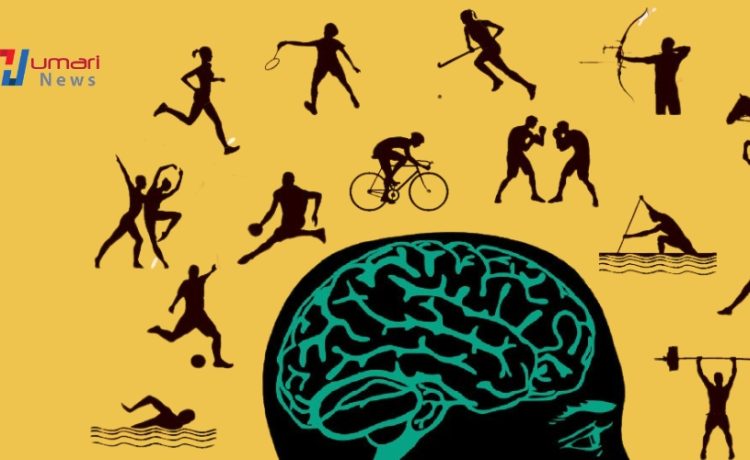Accomplishing top execution in sports includes more than fair physical ability; it requires acing the mental diversion. The brain research of crest execution digs into the attitude, demeanors, and techniques that competitors utilize to optimize their execution beneath weight. From building flexibility to overseeing feelings and keeping up center, understanding the mental perspectives of sports execution is basic for competitors looking for to open their full potential. This article investigates the key standards and procedures that support the brain research of crest execution in sports.
Understanding the Control of the Intellect
The mental amusement may be a basic component of sports execution, affecting athletes’ capacity to execute aptitudes, make decisions, and overcome challenges. The mind-body association is clear in sports, with mental variables such as certainty, inspiration, center, and flexibility playing a critical part in deciding victory. By saddling the control of the intellect, competitors can improve their execution, maximize their potential, and accomplish their objectives on the field or court.
Building Certainty and Self-Belief
Certainty may be a foundation of top execution in sports. Competitors who accept in their capacities are more likely to perform at their best and bounce back from difficulties. Building certainty includes setting achievable objectives, visualizing victory, and centering on qualities instead of shortcomings. Coaches and sports analysts play a pivotal part in sustaining athletes’ certainty through positive fortification, useful input, and mental aptitudes preparing. By developing a solid sense of self-belief, competitors can approach competition with balance, assurance, and flexibility.
Overseeing Weight and Adapting with Stretch
Weight is an unavoidable portion of sports, but how competitors oversee it can make the distinction between victory and disappointment. Compelling stretch administration includes recognizing the signs of weight, controlling excitement levels, and keeping up composure beneath pressure. Methods such as profound breathing, dynamic muscle unwinding, and visualization can help competitors remain calm and centered in high-pressure circumstances. Additionally, reframing pressure as a challenge instead of a risk can move athletes’ attitude and empower them to perform at their best when it things most.
Keeping up Center and Concentration
Keeping up center and concentration is fundamental for peak performance in sports, where split-second choices can decide the result of a diversion. Competitors must learn to square out diversions, remain display within the minute, and keep up a limit center on the errand at hand. Mindfulness procedures, such as reflection and tactile mindfulness exercises, can offer assistance competitors create more prominent concentration and attentional control. In addition, building up pre-performance schedules and ceremonies can prime athletes’ minds for ideal center and execution.
Overcoming Misfortune and Flexibility
Versatility is the capacity to bounce back from mishaps and adversity, a quality that’s basic for victory in sports. Competitors will definitely confront challenges, difficulties, and disappointments all through their careers, but it is how they react to these deterrents that eventually characterizes their success. Cultivating strength includes creating a development attitude, grasping disappointment as an opportunity for learning and development, and keeping up point of view amid difficult times. Coaches can cultivate flexibility by giving back, support, and openings for reflection and development.
Objective Setting and Motivation
Objective setting could be a effective apparatus for spurring competitors and driving execution. Setting particular, quantifiable, achievable, pertinent, and time-bound (Savvy) objectives gives athletes with a clear guide for victory and makes a difference keep up inspiration and center. Short-term objectives can serve as breakthroughs along the way to accomplishing long-term destinations, keeping competitors locked in and persuaded throughout the season. In addition, objective setting permits competitors to track their advance, celebrate triumphs, and alter their procedures as required to remain on course.
Visualization and Mental Practice
Visualization may be a method utilized by competitors to rationally practice aptitudes, methodologies, and exhibitions in distinctive detail. By visualizing victory, competitors can fortify neural pathways, construct certainty, and enhance their capacity to execute aptitudes beneath weight. Visualization procedures include making mental pictures of wanted results, envisioning the sensations and feelings associated with victory, and practicing execution scenarios within the mind’s eye. By incorporating visualization into their preparing regimen, competitors can optimize their planning and execution on diversion day.
The brain research of top execution may be a multifaceted teach that encompasses mindset, attitudes, and procedures for optimizing sports execution. From building certainty and overseeing weight to keeping up center, overcoming difficulty, and setting objectives, competitors can use mental standards to open their full potential and accomplish success on the field or court. Coaches, sports clinicians, and mental execution coaches play a vital part in supporting athletes’ mental improvement and making a difference them tackle the control of the intellect to attain top execution. By coordination mental abilities preparing into their in general preparing regimen, competitors can pick up a competitive edge and flourish within the high-pressure environment of sports competition.







